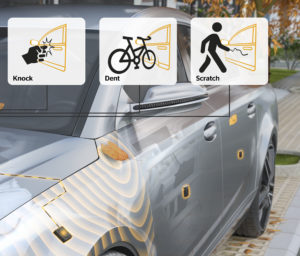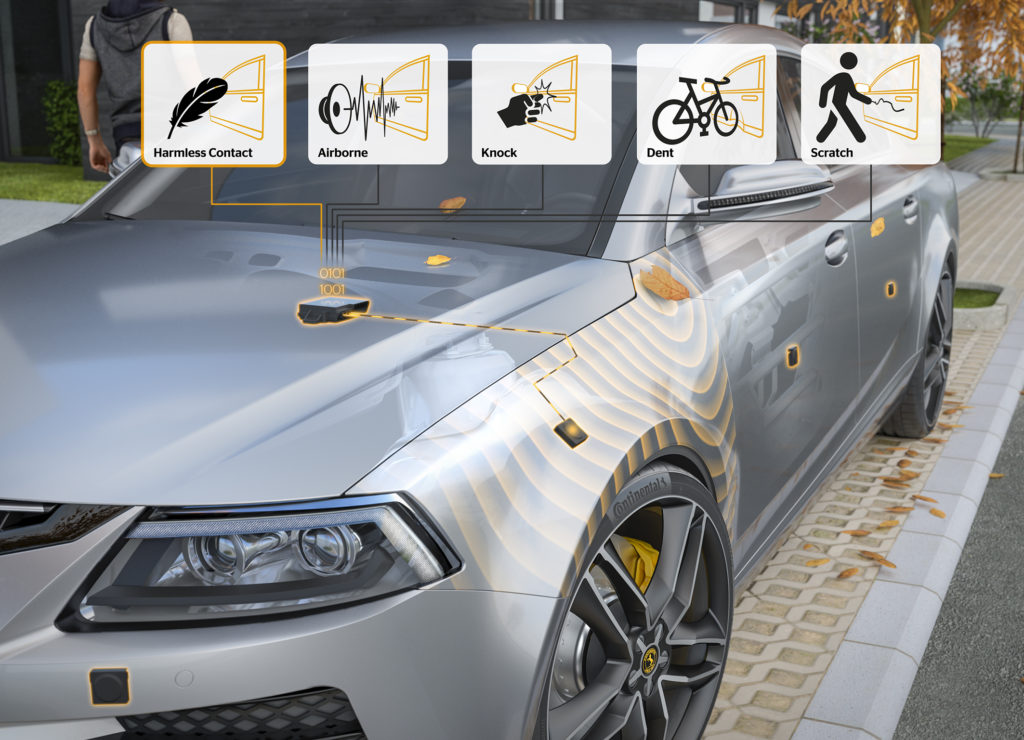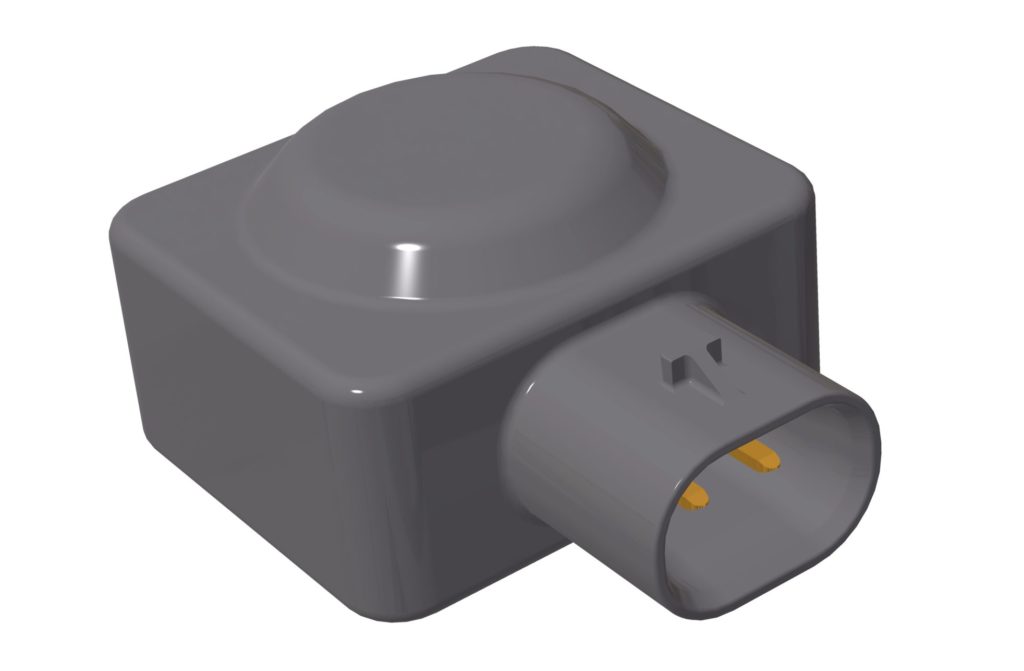
Correction: New Continental auto sensors could detect low-speed impacts
By onAnnouncements | Market Trends | Technology
Continental earlier this month announced a miniaturized sensor it said could detect minor impacts such as low-speed parking lot collisions or some jerk keying your car.
Calling the technology a variation on the sound sensors used by passive safety systems to detect more significant collisions, Continental said its Contact Sensor System technology could entail a network of 2-12 sensors distributed throughout a vehicle.
A graphic shared with the Tier 1’s Dec. 10 news release indicates the sensors would be behind vehicle surfaces.
“You won’t see them as (they) work behind metal/plastic,” Continental chassis and safety division external communications head Sören Pinkow wrote in an email.
Continental said they can be tied into a dedicated electronic control unit or be processed in an existing unit like the airbag’s ECU.
Continental passive safety and sensorics next generation technology manager Andreas Forster said the systems could serve as a helpful hedge, capturing collision scenarios which might not be noticed by technology like ultrasonics or radar.
“This could apply to a situation when a person approaches the car without entering the detection cones of other sensors such as ultrasonic or radar,” Forster said in a statement. “Even though this would be a rare thing to happen, the remaining risk must not be ignored for reasons of safety, especially at the beginning of an autonomous parking maneuver.”
Continental said “automated parking applications are expected to be widely available around 2022,” a notable observation in and of itself.
Laurent Fabre, head of Forster’s passive safety and sensor business unit, said “once CoSSy is on board, its detection principle can be used to add many more functions thus adding to the safety and comfort of a ride.” According to Continental:
Once installed, the CoSSy sensor signals can cover many more use-cases, such as the detection of vandalism (scratching) or low-speed parking incidents, because these types of touch are each characterized by a particular sound signature. Other supported functions are, e.g., road condition observation, an identification of the driver via voice recognition, or detecting approaching emergency vehicles. Even communication with the vehicle via touch could be enabled by CoSSy: A tap at the door by an authenticated driver would suffice to activate an automated door opening. …
In the future CoSSy could also provide an additional signal path to detect the road condition. The sound of water hitting the vehicle structure from below can be used to indicate the potential for hydroplaning. Depending on the future sensor design, airborne sound can be analyzed as well, which would help to detect approaching emergency vehicles – an important prerequisite for the type approval of automated vehicles. By utilizing the Doppler effect, CoSSy can also detect the direction of the approach, which is highly relevant to the driver.
Many of these applications would seem to provide value to vehicles driven by humans as well as machines. “Yes, we see CoSSy applicable for passenger cars as well as autonomous ones,” Pinknow wrote.
Thus, shops who work on typical commercial fleets and consumer vehicles could also find themselves encountering the sensors.
“Structure-born sound can be used as an information source for other applications as well,” Continental wrote. “If a parked car gets dented or scratched, the CoSSy sensors can give the incident a time stamp. The sensor signal could also be used to wake up the appropriate camera to take a photo of the situation or to make the other driver aware of the contact by sounding an alarm or sending an information to a known smartphone. This would help to deter people from vandalism and to avoid unintentional hit-and-run situations. Rental car companies could easily check the car status as ‘undamaged’ when the vehicles are returned.”
Continental said its new technology had closed “a gap in the industry’s automotive sensor portfolio.”
Correction: An earlier version of this article incorrectly described the CoSSy sensors’ location on a vehicle. Continental confirmed the devices would be found behind vehicle exterior surfaces. The article has since been corrected to reflect this.
More information:
“Sensitive Sensing: New multi-purpose contact sensor improves the safety of automated parking”
Featured images: Calling it a variation on the crash impact sound sensors used by passive safety systems to detect more significant collisions, Continental said its Contact Sensor System technology could entail a network of 2-12 sensors distributed throughout a vehicle. The Tier 1 said it could detect low-speed parking lot crashes and even vandalism like someone keying a vehicle. (Provided by Continental)


